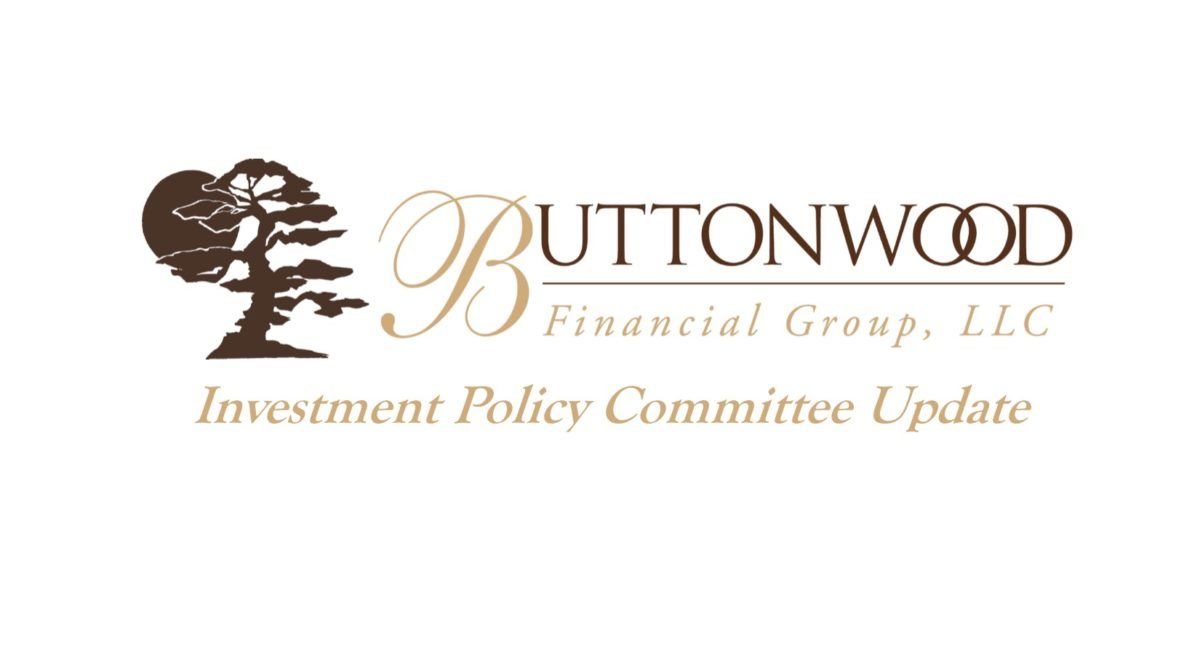Buttonwood Investment Policy Committee Update - May 2022
Update from Buttonwood's Investment Policy Committee
Inflation: A faster trip through the Economic Cycle
We regularly receive questions about specific headlines in the news and their implications. While each day is unique in time, there are certain trends we can follow. As we provide answers, we do so with a lens toward the impact on the economic cycle. Get the cycle right, and you will be miles ahead.
In our March 2022 post, we provided our positioning trends over the last couple of years. Shifting from a defensive allocation as lockdowns were imposed, to aggressive as we entered the Early stages of the economic cycle. In late 2021, as we moved toward Midcycle stages, we shifted to less active risk and reduced sensitivity to sector specific exposure.
Where are we now?
While the synchronized decline in both the stock and bond markets has been unnerving, we expected an increase in volatility as the Fed’s hiking cycle commenced; consistent with historical norms. However, as long as inflation is far above the Fed’s comfort zone (2-3%), we believe the Fed will continue to act in disciplined manner to normalize rates, reduce excess demand and bring the labor market into better balance.
Reviewing corporate reports, it seems as if the rapid selloff has directly contributed to the Fed’s objective of tightening financial conditions (stock volatility is up, credit spreads have widened and both short and long term interest rates have risen). In other words, the markets have already provided substantial tightening to cool the economy. While we expect the annual real GDP growth rate to slow to a below trend pace by the end of this year, given the economy’s strong current expansionary readings and the strength in U.S. consumer balance sheets, we don’t expect GDP to dip below zero and move us into the Contraction stage of the economic cycle.
That said, with hot inflation we are seeing the Fed raise rates faster and thus the potential for a recession has indeed increased. As the Fed flirts with this tipping-point amidst its efforts to reduce inflation, we think volatility could remain elevated and, based on simple math, growth-oriented assets could underperform. Further complicating the Fed’s balancing act, we believe a ‘peak inflation’ narrative may begin to take hold over the summer months as new year-over-year inflation reports reflect last year’s Mt. Everest-like base effects.
Recent data shows excess inventories piling up across industries, and decelerating momentum in wage growth, auto prices, and freight activity further support the idea that inflationary pressures will ebb lower. In our view, if the consensus view of inflation begins to decline, it would take pressure off the Fed, potentially lowering the number of hikes needed and leading markets to lower US Treasury bond term premiums, lower mortgage rates and increase stock prices. Yet, risks to undermining this lower inflation thesis are possible; further escalations in Eastern Europe or more lockdowns in China would negatively impact supply chains pushing prices and inflation higher.
Positioning for Midcycle… and beyond
In our recent tactical rebalance (for non-taxable assets), we adjusted for this inflation conundrum in a couple of ways. After a handsome rally, we reduced exposure to both the energy and commodity sectors, yet increased exposure to inflation protected US Treasuries (TIPS). We also continued to hold several other inflation-focused hedges.
While we trimmed our overweight, we still maintain a bias to stocks over bonds. Looking around the globe, we continue to prefer US stocks for their historical relative resilience to a broad range of economic scenarios and as a proxy for quality. That said, we modestly reduced our long-standing overweight to the US to further mitigate exposure to growth and adjust overall risk closer to our benchmark.
Within our US stock holdings, we rebalanced into potentially lower risk exposure via US Infrastructure and dividend focused stocks. This also brought allocations closer to neutral on the value/growth spectrum with an eye toward hardening the portfolio for whatever may come. While, as we highlighted in March, a recession in Europe has become increasingly possible, we believe the European Central Bank will shift policy to be relatively less antagonistic to risk assets and only slowly normalize policy. This trend makes international developed market stocks marginally more attractive, particularly after such a vicious selloff this year.
We will continue to provide ongoing updates on our views and investment positioning. Should you have specific questions about our strategy, please let us know and we will make sure to review details at our next meeting. And while we don’t recommend fixating on short term market fluctuations, if you would like to check specific investment performance across all your accounts, our Buttonwood Portal is available 24/7. Or you can contact us, and we will provide reports specific to your questions and financial life.
Thank you for your continued trust and allowing us to coordinate your asset management as part of our Family CFO services!
Recent Buttonwood Articles

Are you ready to explore the benefits of your very own Family CFO?




